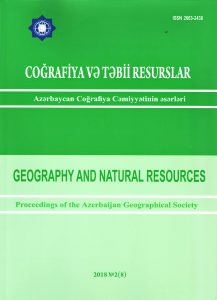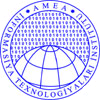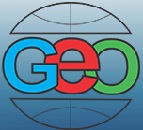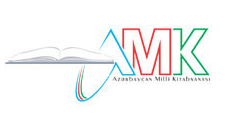ALONSO SANCHEZ DE HUELVA DIDN'T PLAY ANY ROLE IN DISCOVERY OF THE NEW WORLD - PART II (the begining of article: “Meeting of Alonso Sánchez de Huelva with Christopher
Columbus on Madeira Islands”) Spanish monarchs had to keep promises if Christopher Columbus could discover coasts of the New World. Obstacles began to be put in the way of the Genoese seaman, who had demanded great concessions. Columbus could get those concessions partly. People, who were close to the palace, prepared intrigues against the seaman who had become admiral after the first travel. Conquistadors noted that, America had been discovered by Alonso Sanchez (de Huelva – R. D.). It was said because there was an inheritance conflict between heirs of Columbus and leadership of Castilia at that time (1510-1550). That’s why courtiers tried to prove that, lands located on the other side of the ocean hadn’t been discovered by Columbus.5 Historians, who were against Christopher Columbus, noted that, II Juan wanted to entrust Sanchez with discovering those lands as he was in the west after surviving in the catastrophe. Columbus rendered the navigator harmless as he had prepared his own project for the discovery of places located in the west of the Atlantic Ocean and didn’t want any competitor in this work.  King of Portugal II Juan (1455-1495) This thought is so preconceived because when seamen of the wrecked vessel approached the coast, there were a lot of people besides Columbus and explanations were made with participation of them. Peruvian annalist Garcilaso de la Vega, Francisco Lopez de Gomara and Jorje Blon didn’t want to deny services of Christopher Columbus when mentioned name of Huelva and noted that he had met the famous traveler. They only wanted to emphasize that, the Genoese seaman had got necessary information for realization of his transatlantic travel from Huelva. But as Columbus was very experienced navigator, he couldn’t believe in such unserious, inexact information. He was sure that, America was far from Madeira Islands and it was impossible to reach there without knowing coordinates. Alonso de Huelva might meet with any island – even with Green Cape Islands. This strange thought can’t cast a shadow on the authority of Christopher Columbus. It was written in Garcilaso de la Vega’s book that, Alonso Sanchez sailed in an unknown direction for 28-29 days under the influence of the hurricane and approached Santo Domingo Island. How it was possible? It means that, the vessel, which was pushed towards the west, met with Gulfstream current and could run away from it easily. It isn’t convincing as in that case Portuguese could discover unknown lands located in the west of the Atlantic Ocean before the first travel of Columbus. Portuguese had sent there expeditions under the leadership of Vogado, Telles and Van Olmen, but none of those expeditions resulted in success. 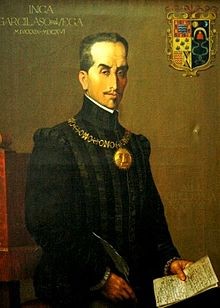 Garcilaso de la Vega (1539-1616) Gulfstream current, which played the role of barrier in front of Big Anthill islands and Small Anthill islands, could take any vessel to Europe in the east of the Atlantic Ocean. It means that, the captain using North Passat blowing from east to west in the northern hemisphere wasn’t able to take his vessel to the Caribbean aquatory as the North Passat rises towards the north and unites with Gulfstream at that latitude of the Atlantic Ocean. If information of Huelva had positive influence on the project of Columbus, the Genoese seaman could follow the North Passat current during his first travel as soon as he left European coasts, directly reach South American coasts and discover Brazil. As Christopher Columbus had sailed near coasts of Guinea before, he was aware of existence of that current. Development of shipbuilding, navigation and geography resulted in achievement of great successes in the field of great geographical discoveries. There was need for experienced and skilful seamen for realization of long-distance travels. Columbus owned all those characteristics. He (Columbus – R.D.) had got systematical education and learned geography, cartography and navigation as the person, who was interested in everything… He had married with the daughter of the Portuguese seaman in Porto Santo Island, so could get sea maps and diaries of his father-in-law.5 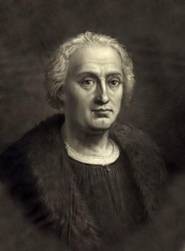 Christopher Columbus (1451-1506) Christopher Columbus had prepared for the transatlantic travel seriously unlike most candidates and could realize it successfully. He didn’t need Alonso de Huelva’s help. He had begun to work on his project before 1484 and didn’t want to change it. I had given detailed information about it in my work “The scientist passed ahead of centuries – Nasiraddin Tusi”. If we consider real discovery of Brazil and base on incorrect official information, we can surely note that, initial discovery of that territory was also made by Spaniards. But French historians note that, the vessel of their fellow-countryman Jan Cousin approached Brazilian coasts by accident at the result of storm in 1488. It is difficult to believe it, as vessels of the French didn’t approach the equator and north-western coasts of Africa because were afraid of Portuguese and Spaniards. But French historians write that, Jan Cuzen's travel was registered in the navigation archive of Dieppe port in France. Scientists, who note that, Brazil had been discovered before Pedro Cabral, are divided into two groups. Most of them note that, Portuguese sailed to Brazilian coasts several years before the first travel of Columbus, but some of them emphasize that, officials of Lisbon knew that territory after 1492. I investigated activity of Columbus carried out in Lisbon first of all in order to elucidate this problem. The succession of events proves that, Christopher Columbus informed Portuguese about the opportunity of sailing to Brazil after he returned from the first travel. Owing to him, the king Juan II decided to send there secret expedition. Best regards, the member of Azerbaijan Geographic Society, President grant holder on literature, laureate of the “Golden pen” award, writer/ investigator Ramiz Daniz email: [email protected], [email protected] 5 Путешествие Христофора Колумба. М., 1956. Свет Я. Колумб. 1973.
5 История средних веков. Абрамсон М. Л., Кириллова А. А., Колесницкий Н. Ф. и другие. Под редакцией Колесницкого Н. Ф. – 2-е издан. исп. и доп. – М., «Просвещение». 1986.стр. 393
 24211 24211 |
|








 AZ
AZ EN
EN RU
RU


